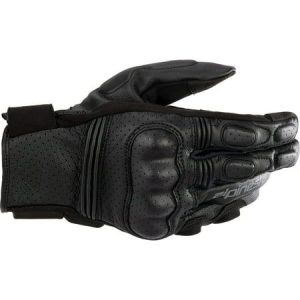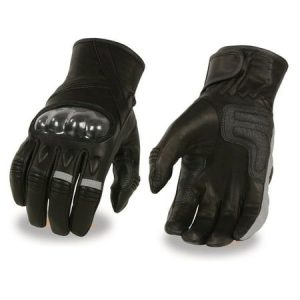How to Measure Hands for Motorcycle Gloves
Motorcycle gloves are vital safety equipment for any rider. They shield your hands from abrasions, impacts, and the elements, but only if they fit properly. Ill-fitting gloves can be uncomfortable, hinder dexterity, and even compromise safety in a crash.
This guide will walk you through the simple process of measuring your hands for motorcycle gloves, ensuring a comfortable and secure fit for your next ride.
Why a Perfect Fit Matters
Motorcycle gloves come in a vast array of sizes and styles, but unlike a casual pair, a perfect fit is crucial. Here’s why:

- Safety: Loose gloves can bunch up and reduce your grip on the handlebars, potentially leading to lost control in an emergency. Conversely, tight gloves can restrict blood flow and dexterity, making it difficult to operate the motorcycle’s controls.
- Comfort: Motorcycle gloves are meant to be worn for extended periods. A well-fitting glove will be snug but comfortable, allowing for proper hand movement and preventing fatigue.
- Protection: Motorcycle gloves are designed to absorb impact and protect your hands in a crash. A loose glove may not stay in place during an accident, reducing its effectiveness.
By taking the time to measure your hands and find the right size glove, you’ll be ensuring optimal safety, comfort, and performance on the road.
Tools You’ll Need
Measuring your hands for motorcycle gloves is a quick and easy process that requires minimal tools:
- Soft measuring tape: A cloth measuring tape is ideal as it conforms to the curves of your hand. You can find one at a sewing store or tailor shop. If you don’t have a measuring tape, a piece of string and a ruler can work in a pinch.
- Pen and paper (optional): Having a pen and paper handy allows you to note down your measurements for reference when choosing gloves.
Measuring Your Hands
Here’s a step-by-step guide on how to measure your hands for motorcycle gloves:

-
Dominant Hand: Most people have a slight size difference between their hands. It’s best to measure your dominant hand, as this will be the size you reference when selecting gloves.
-
Make a Fist: Gently close your hand into a loose fist, mimicking your grip on a motorcycle handlebar. This ensures the measurement accounts for the natural curvature of your hand when riding.
-
Wrap the Tape Measure: Take the measuring tape and wrap it snugly around the widest part of your hand, excluding your thumb. The tape should be firm but not constricting.
-
Read the Measurement: Locate the point where the tape measure meets itself and note down the measurement in inches to the nearest quarter inch. If you’re using a string, mark the spot on the string that corresponds to the circumference of your hand and then measure that distance with a ruler.
-
Repeat for Other Hand (Optional): If you notice a significant size difference between your hands, you may want to measure your non-dominant hand as well. In this case, choose the size that best accommodates your larger hand.
If your measurement falls between sizes, it’s generally recommended to size up for motorcycle gloves. Leather gloves tend to stretch slightly over time, while textile gloves typically do not.
Using Your Measurements to Find the Right Size
Once you have your hand measurement, it’s time to find the corresponding glove size. Here’s how:

-
Manufacturer Sizing Charts: Each motorcycle glove manufacturer will have a sizing chart that translates hand circumference measurements into specific glove sizes (e.g., small, medium, large, etc.). These charts are usually available on the manufacturer’s website or product packaging.
-
Consider Glove Style: Different styles of motorcycle gloves may have slightly different fits. For example, racing gloves tend to be more snug-fitting for optimal feel and control, while touring gloves may offer a more relaxed fit for long-distance comfort.
-
Online Reviews: When shopping online, customer reviews can provide valuable insights into the fit of specific motorcycle gloves. Look for reviews that mention sizing and how the gloves fit compared to the wearer’s hand measurements.
-
Try Before You Buy (Ideally): Whenever possible, try on motorcycle gloves before purchasing them. This allows you to assess the fit, feel, and comfort for yourself. Many motorcycle dealerships and gear stores will have a selection of gloves available for try-on.
Material Matters: How Motorcycle Gloves Material Affects Fit
The material your motorcycle gloves are made from can also influence how they fit and feel. Here’s a breakdown of some common materials and their impact on sizing:

-
Leather: Leather gloves are a popular choice for motorcycle riders due to their durability, abrasion resistance, and weatherproofing. However, new leather gloves can feel stiff and require a break-in period. It’s important to consider this when choosing your size, as leather gloves may stretch slightly over time. Opt for a snug but comfortable fit, knowing they will loosen up a bit with use.
-
Textile: Textile gloves, often made from synthetic materials like nylon or polyester, offer a more comfortable and flexible fit out of the box. They may also be more breathable than leather gloves, making them a good option for warmer weather riding. However, textile gloves typically don’t offer the same level of abrasion resistance as leather. Choose a size that fits comfortably without being too loose, as textile materials generally don’t stretch significantly.
-
Combination Materials: Many motorcycle gloves today utilize a combination of leather and textile materials. This offers a balance of abrasion resistance, comfort, and breathability. When it comes to sizing with combination gloves, refer to the manufacturer’s recommendations and consider how the different materials might feel and fit on your hand.
Don’t Forget Your Fingers!
While hand circumference is the primary measurement for motorcycle gloves, finger length can also be a factor for optimal fit. Here’s what to consider:

-
Pre-Curved Fingers: Many motorcycle gloves come with pre-curved fingers to mimic the natural curvature of your hand when gripping handlebars. This can improve comfort and reduce fatigue on long rides.
-
Fingertip Feel: Ideally, your fingertips should just touch the end of the glove fingers without excess fabric. This allows for proper dexterity and feel for the motorcycle controls. If the fingertips are too long, they may bunch up and hinder your ability to operate the levers and buttons. Conversely, gloves that are too short may not provide adequate protection for your fingertips.
-
Trying on Gloves: The best way to assess finger length is to try on the gloves yourself. Pay attention to how the fingertips feel and adjust the sizing accordingly.
By following these tips and utilizing the available resources, you’ll be well on your way to finding the perfect fitting motorcycle gloves. Remember, a comfortable and secure fit is essential for optimal safety, control, and enjoyment on the road. Don’t hesitate to invest time in the process – your hands will thank you for it!
